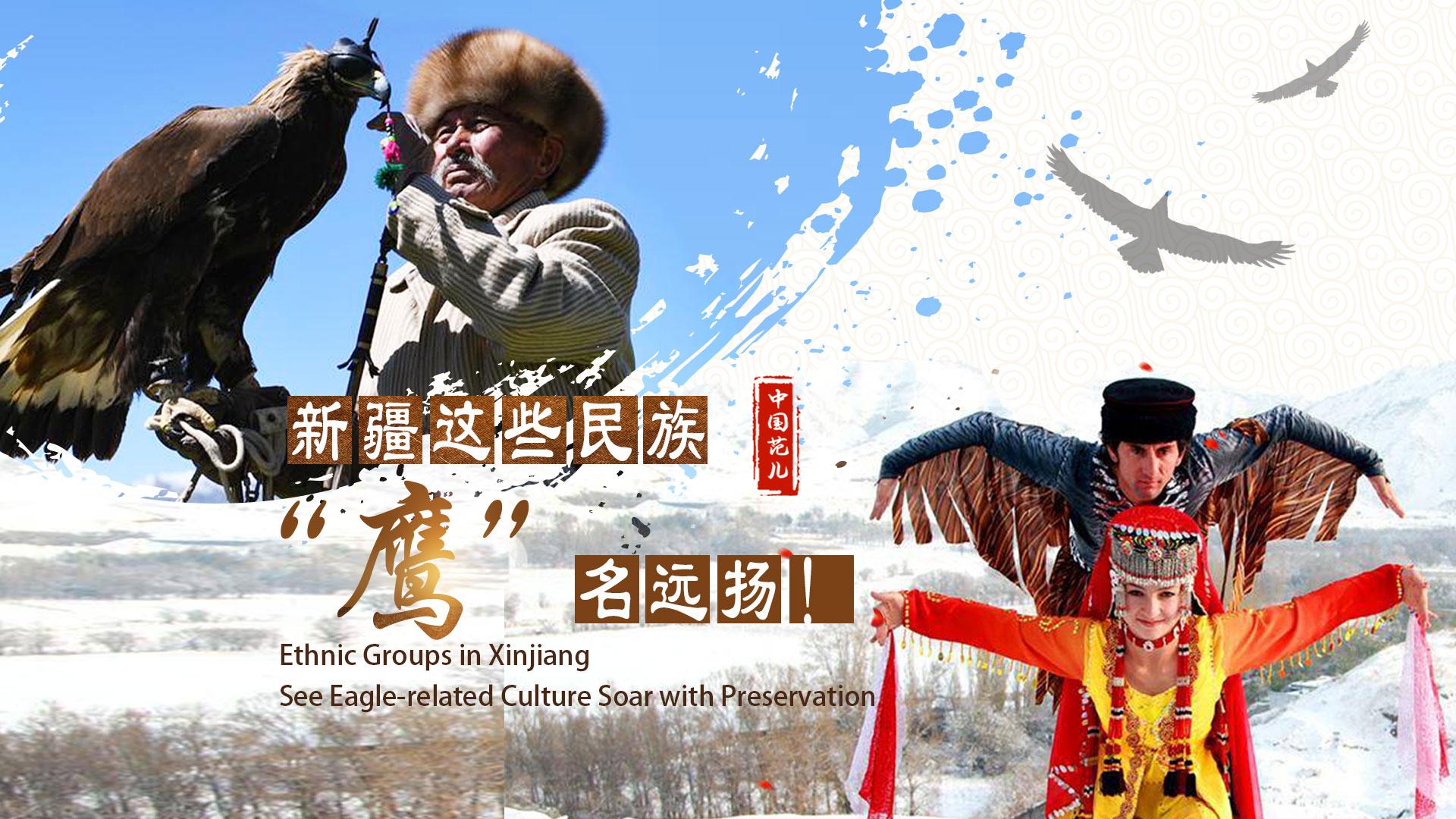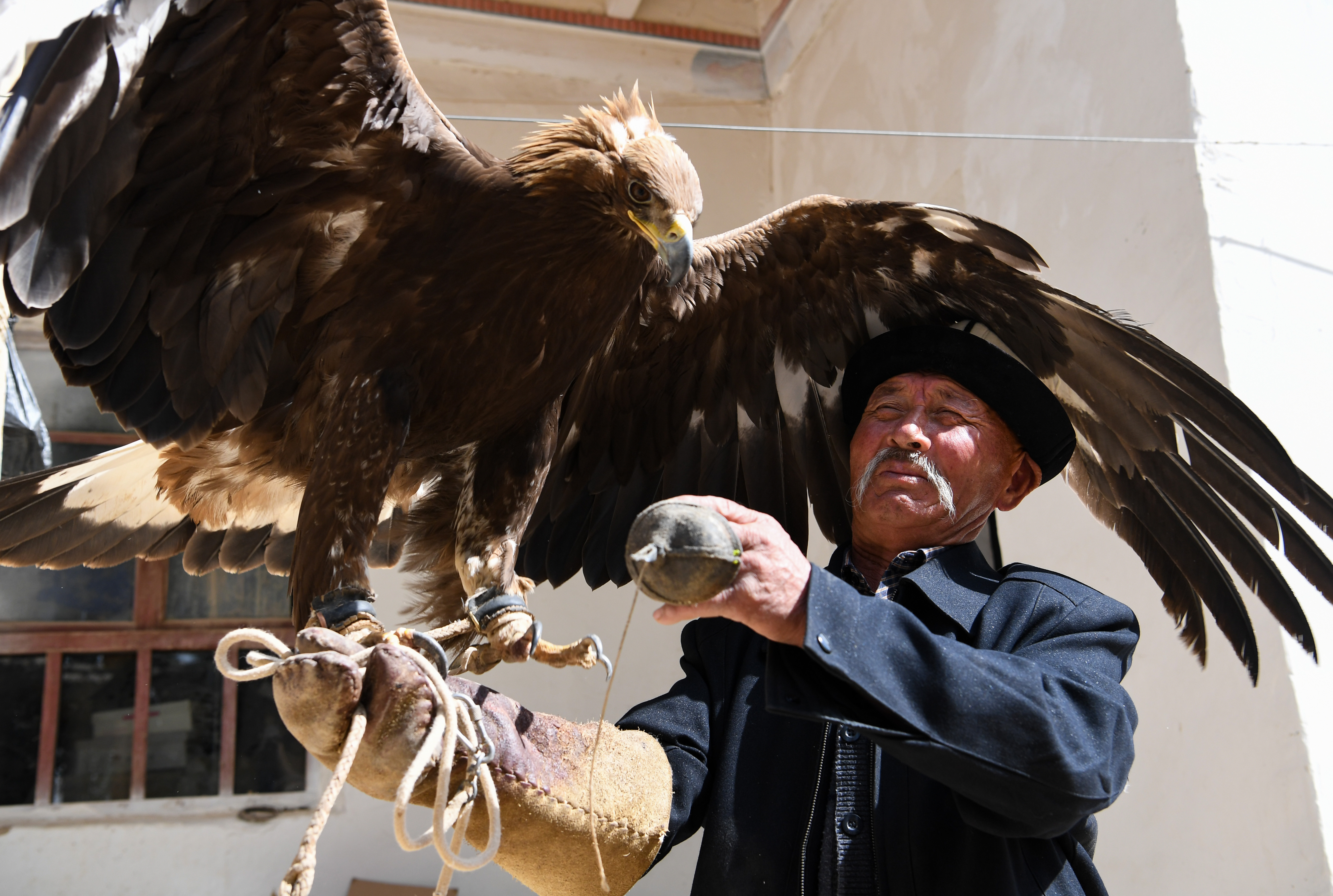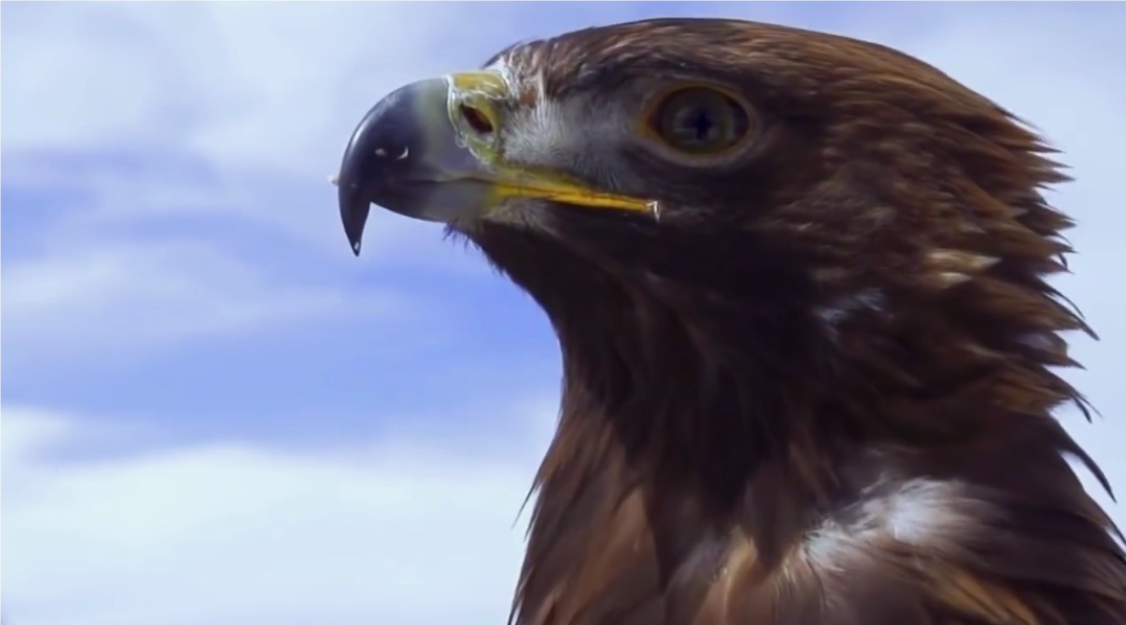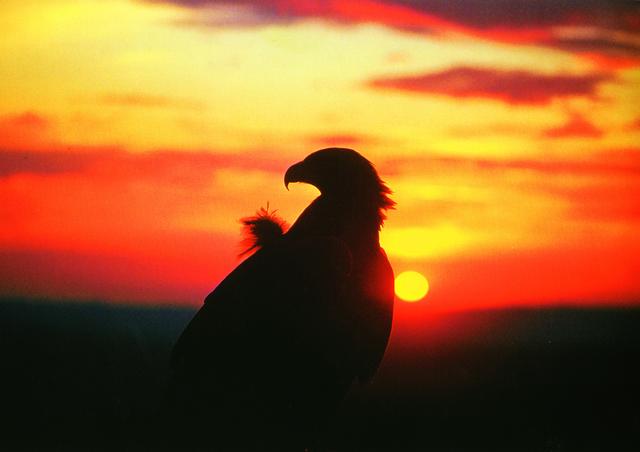石榴籽·同心圓 | 新疆這些民族“鷹”名遠揚!
這裡是“鷹之聖地”,這裡是中國新疆。在這裡,不同民族形成了各具特色的“鷹文化”。
This is a sanctuary for eagles. This is northwest China's Xinjiang Uygur Autonomous Region. Here, several ethnic groups have developed their distinctive eagle-related culture.

在塔吉克族人眼裏,鷹是英雄的象徵。
In the eyes of the Tajik people, the eagle is a symbol of heroism.
世代居住于帕米爾高原上的塔吉克族人,對高原雄鷹有一種特殊的感情。能歌善舞的塔吉克族人模倣雄鷹自由翱翔的各種姿態,用“鷹舞”體現對鷹的崇敬。
The Tajik people, living on the Pamir Plateau for generations, have a special affection for the highland eagle. Known for their singing and dancing talent, they imitate the various postures of the soaring eagle in their "eagle dance," expressing reverence for the majestic bird.

柯爾克孜族、哈薩克族,獵鷹是他們一生的朋友。
For the Kirgiz and Kazakh ethnic groups, the falcon is a lifelong companion.
位於天山南脈的阿合奇縣,被稱為“獵鷹之鄉”,是柯爾克孜族的聚居地。柯爾克孜族人世代與鷹為伴,放牧為生。他們馴養雄鷹,以騎馬架鷹的方式進行狩獵,這裡的獵鷹種類多達60多種。每到“獵鷹節”,牧民會帶著他們心愛的獵鷹展示和比賽。
Located in the southern part of the Tianshan Mountains, Aheqi County is known as the "hometown of falcon" and is a settlement for the Kirgiz people.The Kirgiz people, relying on livestock herding for living, have kept eagles as companion for generations. They train and hunt with eagles, using a unique method known as horseback falconry. There are over 60 different species of falcons in this region. During the falcon cultural festival, local herders would showcase and compete with their beloved falcon.

同樣擁有“獵鷹”習俗的哈薩克族更側重於使用體型更大的金雕進行狩獵。哈薩克族居住在新疆北部、美麗的阿勒泰大草原上,手托兇猛金雕,放馬賓士于草原山林中。金雕飛到空中幫馬背上的主人尋找獵物,並以時速300公里俯衝捕獵。
The Kazakh people, who also share the falconry tradition, prefer using the larger golden eagle for hunting. The Kazakh people reside in the beautiful Altai grasslands in northern Xinjiang. With a fierce golden eagle perched on their arm, they gallop on horseback across the grasslands and forests. The golden eagle soars into the sky, assisting its owner on horseback in searching for prey and diving at speeds of up to 300 kilometers per hour for the hunt.

這兩個民族的馴鷹過程大致是相同的,經過捕鷹、熬鷹、馴鷹、放鷹等幾個階段,一隻野鷹就成了獵鷹。
The process of falconry is generally the same for both ethnic groups. After several stages including capturing, taming, training and releasing, a wild eagle will be transformed into a hunting companion.

如今,隨著中國保護野生動物政策的完善、牧區經濟的發展和生活方式的轉變,草原上的馴鷹已基本不再用於狩獵。但鷹依然是人類親密的夥伴,也是馴鷹人難以割捨的情懷。年輕人接過了父輩手中的鷹,同時被傳承下來的,還有人與鷹的“約定”——獵鷹被馴養幾年後,將放歸自然,繁衍生息。
However, with the improvement of wildlife conservation policies in China, the development of pastoral economies, and changes in lifestyles, trained eagles on the grasslands are no longer used for hunting. Nevertheless, eagles remain intimate companions to humans and hold a deep emotional significance for falconers. Younger generations have taken over the eagles from their ancestors, and along with the tradition, they also inherit the "agreement" between humans and eagles - after a few years of training, the falcons are released back into the wild to reproduce and thrive.
無論是“鷹舞”還是“馴鷹習俗”,作為國家非物質文化遺産,都以自己的方式表達著對自然的熱愛,傳承著古老的民族技藝。
Both the "eagle dance" and the "falconry tradition are national intangible cultural heritage. Related ethnic groups express their love for nature and preserve ancient ethnic skills in their own unique ways.
↑↑↑











